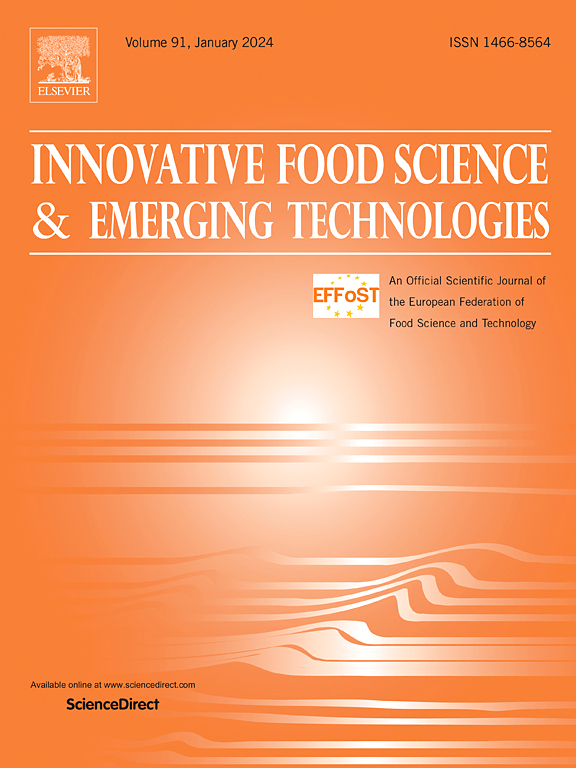Application of cold plasma for rice bran preservation: Effects on stability and quality
IF 6.3
1区 农林科学
Q1 FOOD SCIENCE & TECHNOLOGY
Innovative Food Science & Emerging Technologies
Pub Date : 2025-04-11
DOI:10.1016/j.ifset.2025.104025
引用次数: 0
Abstract
The storage of rice bran is challenging for traditional methods, making it crucial to explore new technologies. This study used dielectric barrier discharge (DBD) plasma with air and argon as working gases to treat rice bran under various voltage and time conditions. The effects on rice bran stability and quality were evaluated by analyzing changes in color difference, acid value (AV), peroxide value (POV), fatty acids, volatile components, and antioxidant capacity. Results showed that neither air nor argon plasma significantly affected rice bran color but both enhanced its antioxidant capacity. Higher voltage and longer treatment time improved antioxidant capacity while reducing γ-oryzanol and α-tocopherol levels. Air and argon plasmas significantly affected the volatile components of rice bran; aldehyde-like substances increased with air plasma while acids increased with argon plasma treatment. The rate of increase in AV during storage decreased significantly after treatment with air or argon plasma. Plasma treatment substantially increased the POV initially but decreased over storage duration. Air plasma exhibited better preservation effects compared to argon plasma. Principal component analysis (PCA) indicated that air plasma at 55 kV for 8 min demonstrated optimal characteristics for rice bran storage. Although cold plasma has demonstrated potential in rice bran storage, the issues on oxidation of polyunsaturated fatty acid and potential loss of active ingredients should be solved in the future.
冷等离子体在米糠保鲜中的应用:对米糠稳定性和品质的影响
米糠的储存对传统方法来说是一个挑战,因此探索新技术至关重要。采用介质阻挡放电(DBD)等离子体,以空气和氩气为工作气体,在不同电压和时间条件下对米糠进行处理。通过分析米糠色差、酸值(AV)、过氧化值(POV)、脂肪酸、挥发性成分和抗氧化能力的变化,评价其对米糠稳定性和品质的影响。结果表明,空气等离子体和氩气等离子体对米糠颜色均无显著影响,但均能增强米糠的抗氧化能力。较高的电压和较长的处理时间提高了抗氧化能力,同时降低了γ-谷维素和α-生育酚的水平。空气和氩气等离子体对米糠挥发性成分影响显著;醛类物质随空气等离子体处理而增加,酸类物质随氩等离子体处理而增加。空气或氩气等离子体处理后,贮藏过程中AV的增加速率明显降低。等离子体处理最初显著增加了POV,但随着储存时间的延长而降低。与氩等离子体相比,空气等离子体具有更好的保存效果。主成分分析(PCA)表明,空气等离子体在55 kV条件下保存8 min,对米糠具有最佳的贮藏特性。虽然冷等离子体在米糠储存中已显示出潜力,但多不饱和脂肪酸的氧化和活性成分的潜在损失问题有待解决。
本文章由计算机程序翻译,如有差异,请以英文原文为准。
求助全文
约1分钟内获得全文
求助全文
来源期刊
CiteScore
12.00
自引率
6.10%
发文量
259
审稿时长
25 days
期刊介绍:
Innovative Food Science and Emerging Technologies (IFSET) aims to provide the highest quality original contributions and few, mainly upon invitation, reviews on and highly innovative developments in food science and emerging food process technologies. The significance of the results either for the science community or for industrial R&D groups must be specified. Papers submitted must be of highest scientific quality and only those advancing current scientific knowledge and understanding or with technical relevance will be considered.

 求助内容:
求助内容: 应助结果提醒方式:
应助结果提醒方式:


